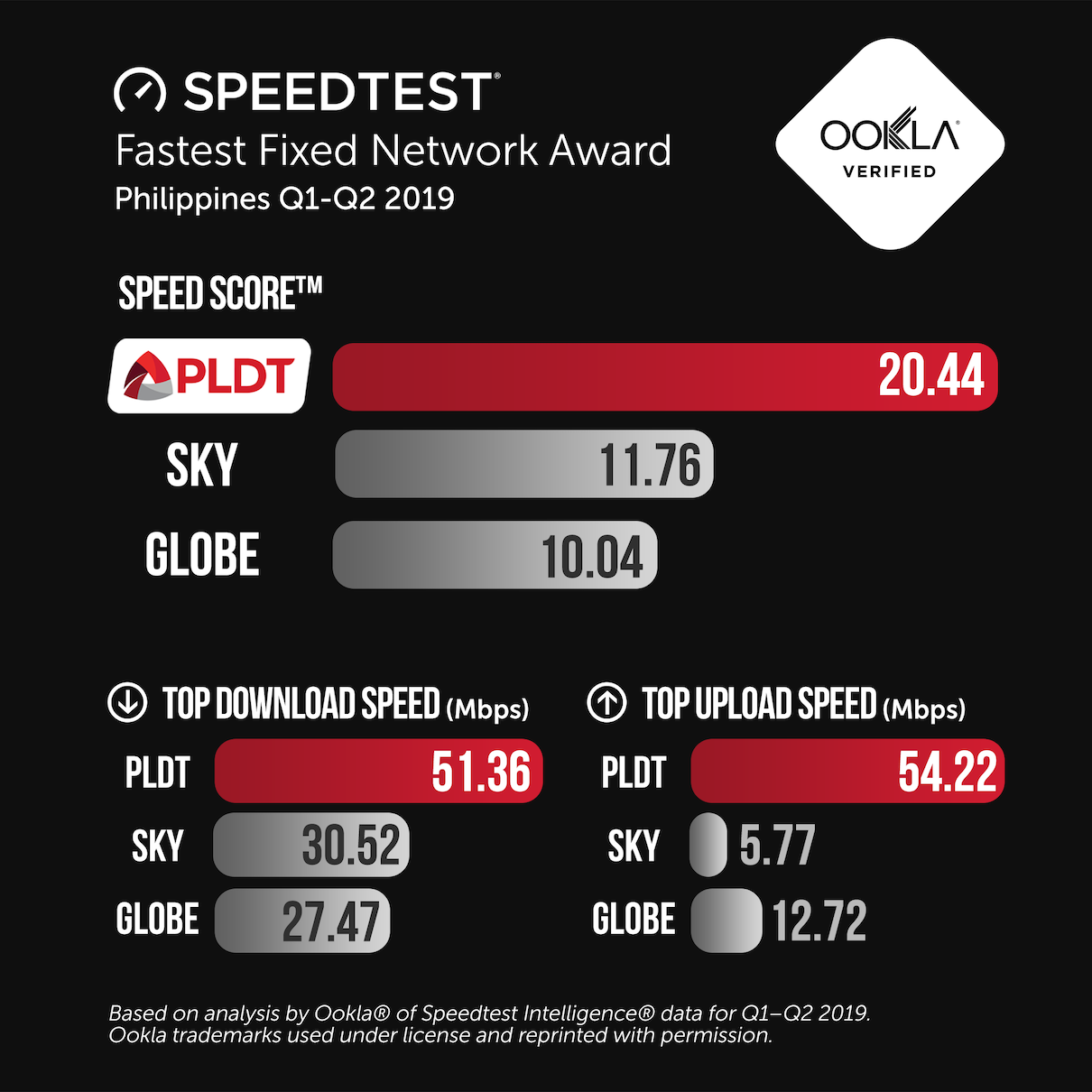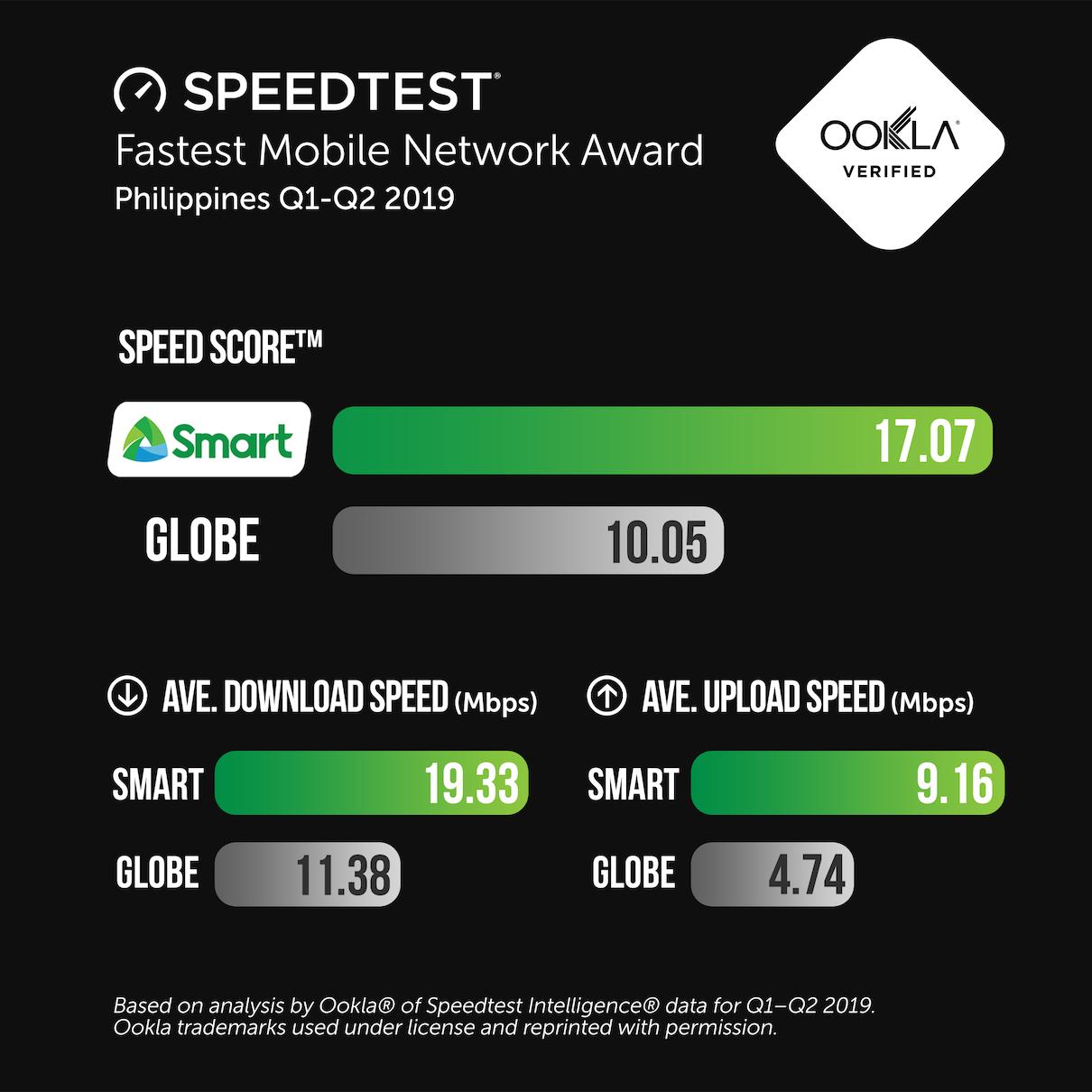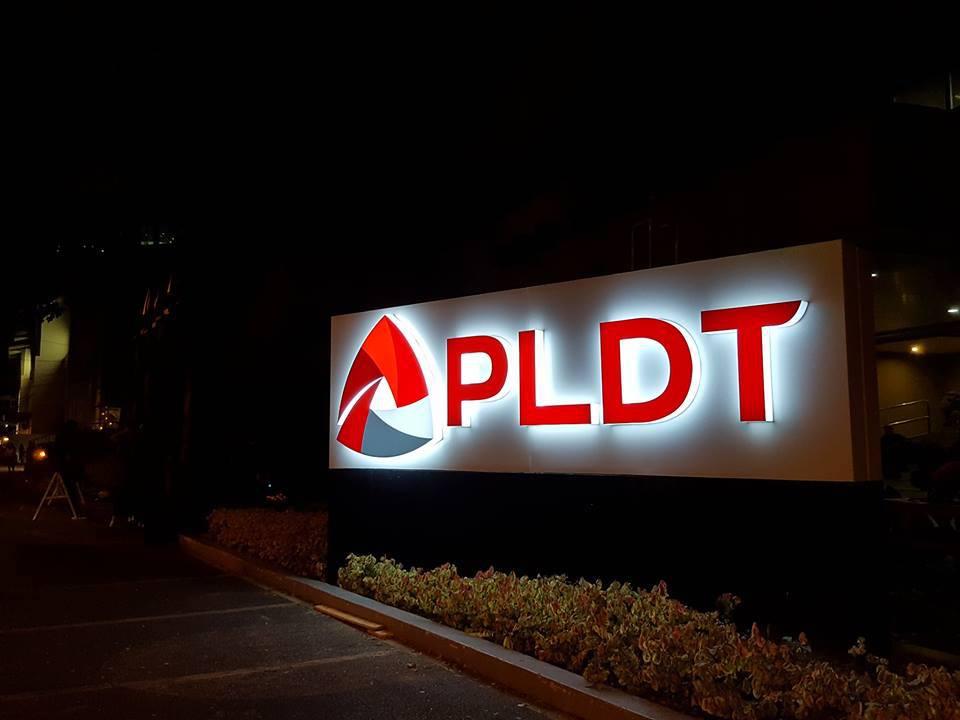PLDT and its wireless subsidiary Smart Communications, Inc. (Smart) continue to set the pace for Internet services in the Philippines, posting the country’s fastest fixed and mobile data speeds for the first half of 2019, according to Ookla, the global leader in internet testing and analysis.
The latest report, which covers Q1-Q2 2019, also shows both PLDT and Smart widening their respective leads over competitors.
According to the Ookla report, PLDT achieved a Speed ScoreTM of 20.44, with top download speeds of 51.36 Mbps and top upload speeds of 54.22 Mbps. The fixed network award is based on 25,169,867 customer-initiated Speedtest nationwide for the same period.
On the other hand, Smart achieved a Speed Score of 17.07, with average download speeds of 19.33 Mbps and average upload speeds of 9.16 Mbps. The mobile award is based on 1,857,286 consumer-initiated tests taken with Speedtest® on LTE-capable devices in the Philippines.
Speed Score is a measure that takes into account both upload and download speeds.
These latest figures are improvements from the Q3-Q4 2018 scores, when Smart posted a Speed Score of 15.57 and PLDT achieved a speed score of 18.57.
PLDT and Smart have also widened their respective leads over their competitors in terms of Speed Scores. For instance, from a gap of between 7.3 to 9.2 in Q3-Q4 2018, PLDT now leads over its competitors by as much as 8.7 to 10. Smart, on the other hand, widened its lead from 5.5 to 7.

Drilling down, initial data also showed PLDT posting big leads in key cities like Quezon City, Cebu City and Pasig, whereas Smart’s Speed Score more than double that of competition in Quezon City, Makati, and Manila.
In Pasig City, for example, PLDT posted a Speed Score of 21.7, more than 9 points ahead of Globe’s 12.2, while PLDT’s 20.77 Speed Score in Cebu City is double that of Globe’s 10.46 Speed Score in the area.

Meanwhile, Smart’s Speed Scores were consistently more than double that of Globe’s in Quezon City, Makati and Manila, for instance.
“Our network investments have considerably improved customer experience so that they can now watch videos without buffering, update their social media accounts, or easily check their email and open attachments while on-the-go,” said Mario Tamayo, senior vice president for Network Planning and Engineering, PLDT and Smart.
“Now that our subscribers use more data, and as we continue to bring in new customers, we have to ensure they get fast and reliable connection all the time. We continue to build and expand our fiber and LTE network to meet those needs,” Tamayo added.
For mobile, Speed Score incorporates a measure of each provider’s download and upload speed to rank network speed performance. Tests used to calculate the Speed Score exclusively come from ‘modern devices’, which are devices capable of connecting to the market’s fastest, generally available technology.
For fixed, Ookla assesses the best network speeds attained across a given network, accounting for tests that are taken on various Speedtest applications that connect to a fixed network, including tests taken on mobile phones over a Wi-Fi connection. Each top carrier accounts for at least 3% of the sample size in the geographic area.
Integrated fixed, mobile network upgrades
PLDT’s total fiber optic cable network footprint is now at over 259,000 kilometers, while its fiber-powered fixed line broadband network has now passed 6.7 million homes as of end-March.
Of LTE sites nationwide, 71% have already been upgraded to LTE-A, which means each cell site has multiple LTE base stations activated. In the first quarter of 2019 alone, Smart deployed an additional 1,700 LTE base stations across its sites nationwide, raising the LTE base station count to around 18,000 as of the first quarter.
Smart has also already fulfilled its commitment to the National Telecommunications Commission to cover at least 90 percent of the country’s cities and municipalities to address the growing demand for broadband infrastructure and internet access.
